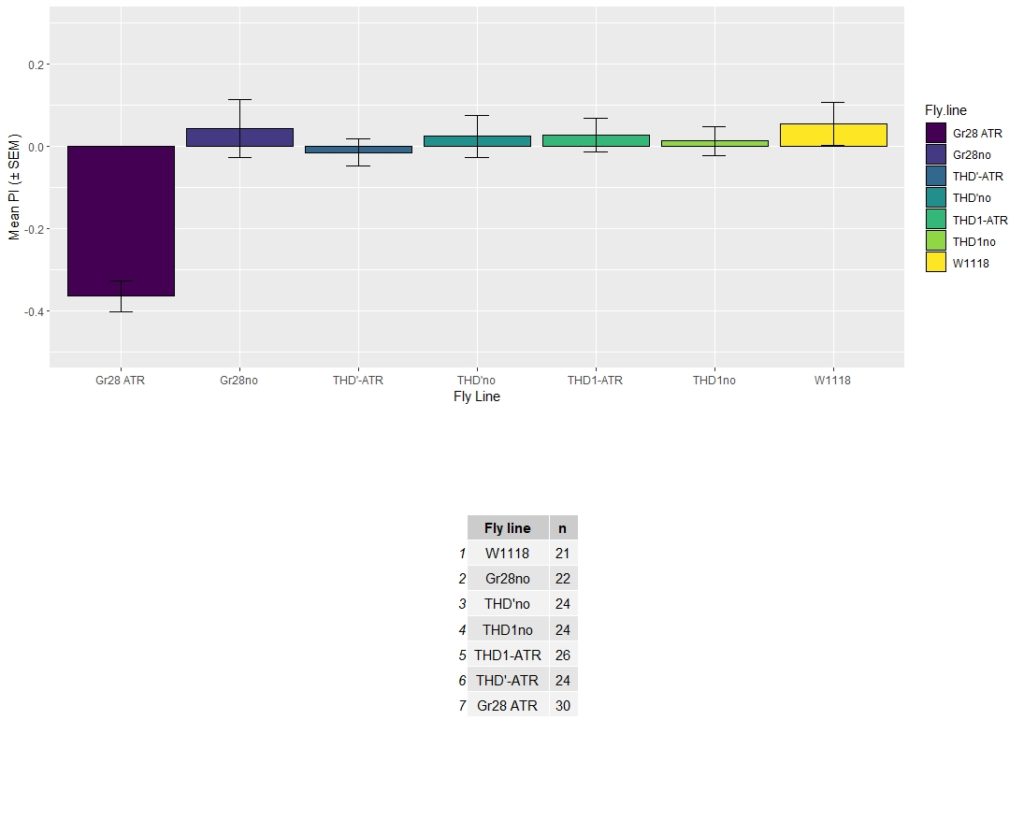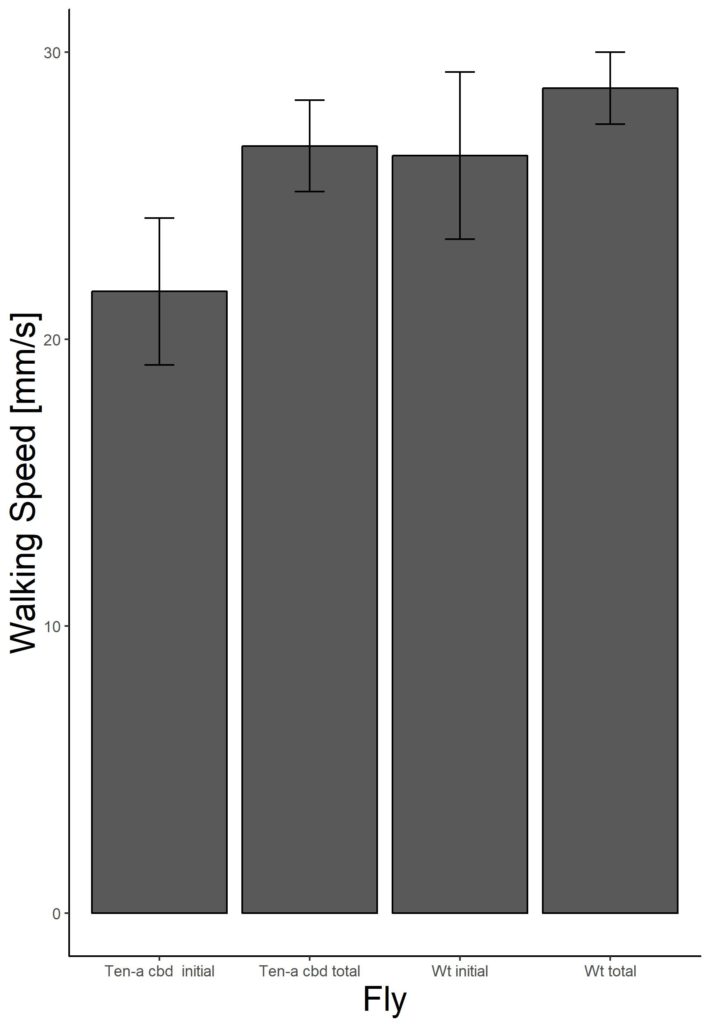Some issues with UAS-TNT control
on Monday, April 20th, 2020 1:57 | by Anders Eriksson
I experienced some issues with the first batch of the UAS-TNT control flies, theyh ad a very low learning curve. The second batched looked fine but the still have a slightly lower learning PI during Test1 than I want.
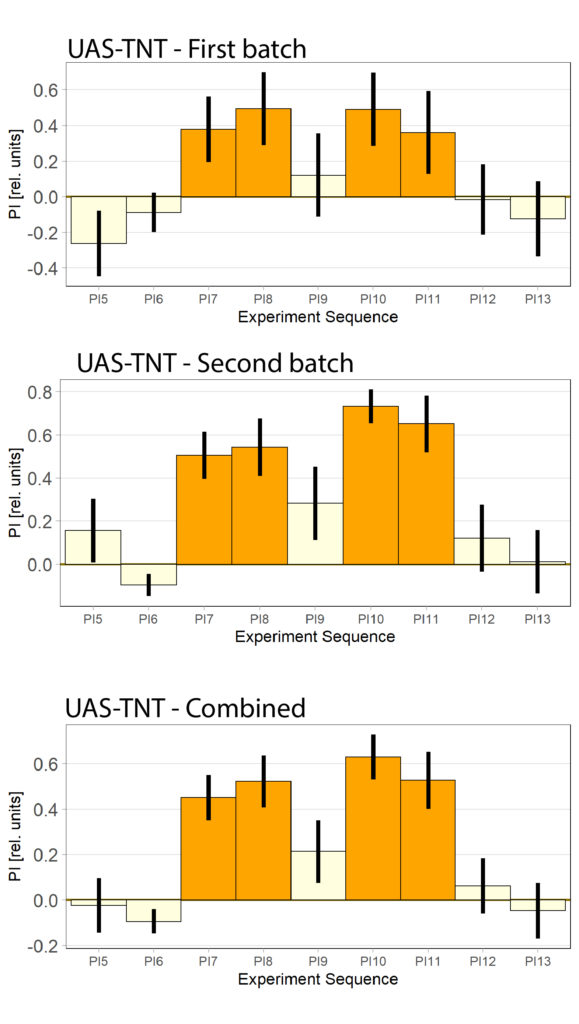
Category: flight, genetics, Lab, Memory, operant self-learning | No Comments
Motion blindness in T4/T5 using Optomotor Response
on Tuesday, March 31st, 2020 1:48 | by Anders Eriksson
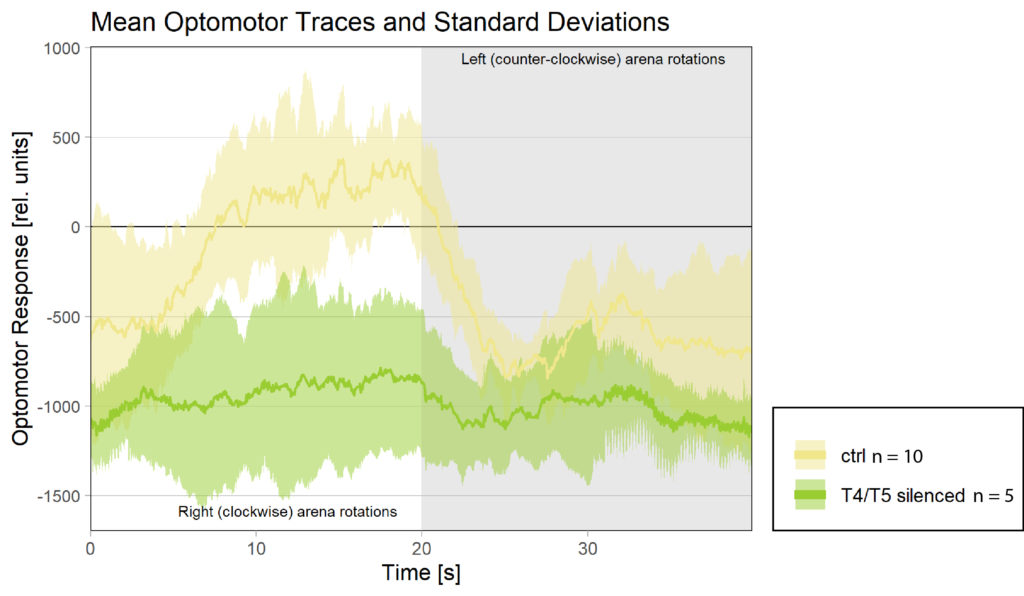
Category: genetics, Lab, Optomotor response | No Comments
Waiting for crosses to hatch
on Wednesday, February 26th, 2020 1:46 | by Ottavia Palazzo
- ato-Gal4 x conditional KO —> Removing FoxP in Dorsal Cluster Neurons for Buridan
- cmpy-Gal4 x conditional KO —> Removing FoxP in Protocerebral Bridge for Buridan
- temperature switch at embryo stage but shorter time —> for replicating the KO phenotype
- LexA + Gal4 together to analyze larval brain (I have always considered larvae except for this experiment, so I am doing it to be more complete)
Furthermore, for not loosing time this week I did:
- Leipzig presentation
- Wrote a bit of results for paper/thesis
Category: buridan, crosses, Foxp | No Comments
T-maze screen with yellow light
on Monday, February 3rd, 2020 12:57 | by Anders Eriksson
Category: crosses, genetics, Lab, neuronal activation | No Comments
Crossings I did this week
on Tuesday, January 7th, 2020 11:57 | by Ottavia Palazzo
- Protocerebral bridge lines X CD8-GFP
- C380-Gal4 X UAS-gFOXP;UAS-Cas9 (+ 2 controls)
- stinger;Foxp-iB X FoxP-KO
Category: crosses, Foxp | No Comments
Strokelitude – New Findings and Recordings (1.-7. Apr.)
on Monday, April 8th, 2019 1:14 | by Miroslav Stojic
Last week (1.-7.Apr 2019) we noted how many flies want to fly more than 8 min and here is the result (only the ones we noted):
– Wild type: 8/9 (88%)
– ElavGal4 x UAS-Ryr 28919: 3/12 (25%)
– ElavGal4 x UAS-Ryr 65885: 6/35 (17%)
Trace (Downsampled 5) Graphs of Recordings
Wild type:








ElavGal4 x UAS-Ryr 28919:



ElavGal4 x UAS-Ryr 65885:









Category: crosses, Spontaneous Behavior, strokelitude, WingStroke | No Comments
Strokelitude 5 New Rec
on Monday, April 1st, 2019 2:54 | by Miroslav Stojic
New Findings:
Elav-Gal4 x UAS-SERCA 44581 flies => Lethal before adulthood! (in all 5 vials so far)





Category: crosses, Spontaneous Behavior, strokelitude, WingStroke | No Comments
Inhibition of habit formation screening (MB011B)
on Wednesday, March 20th, 2019 1:45 | by Anders Eriksson
A flight performance test to see how the flies are behaving while flying. They have a slightly lower flight duration compared to the genetic controls but nothing that should impair them in the experiment.
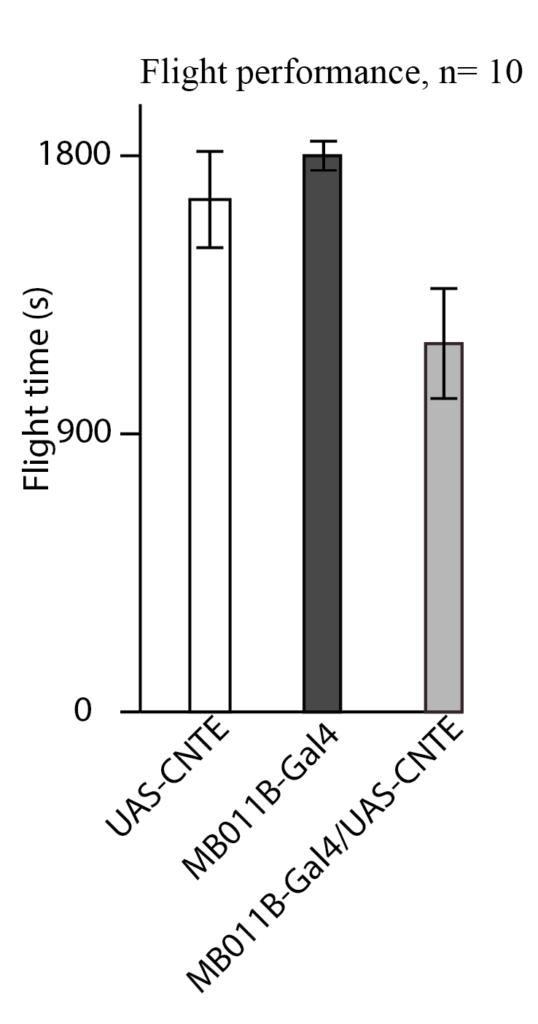
The learning experiments are ongoing. I am doing n=15 for each line and each experiment, both Composite Control and also a Isolated Operant experiment. The Composite control experiment is done but I only got 13 flies for Isolated Operant. I do not want to preanalyze the data and will therefor post it when all the flies are done.
Category: crosses, flight, genetics | No Comments
Flight performance Ten-a cbd
on Monday, January 14th, 2019 2:54 | by Anders Eriksson
Control experiments for GFP expression of MBON lines
on Monday, October 29th, 2018 2:38 | by Anders Eriksson
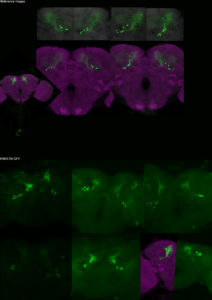
MB077B
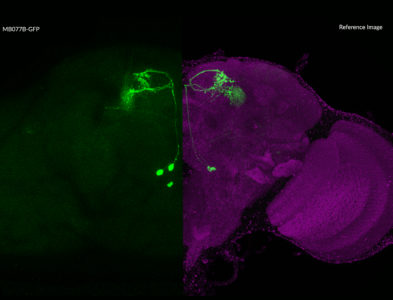
Category: Anatomy, crosses, genetics | No Comments

